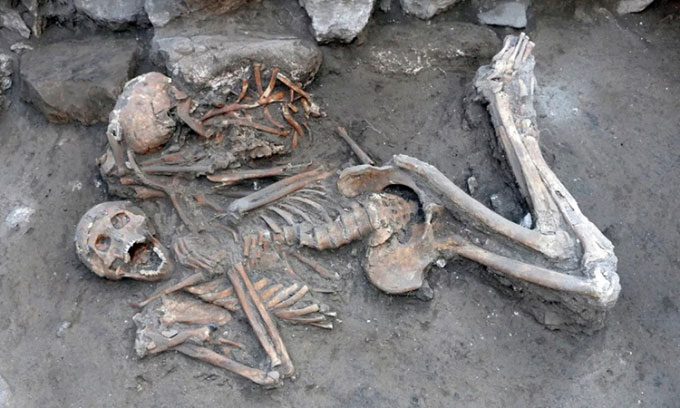The discovery of two human skeletons in northern Israel serves as a significant example of the ancient practice of trepanation in the Near East.
During the excavation of a tomb at Tel Megiddo, a site that belonged to the Canaanite city-state of Israel during the Bronze Age, archaeologists were astonished to find the remains of two brothers, one of whom had undergone trepanation shortly before death.

Tomb containing the remains of two brothers who died 3,400 years ago in Israel. (Photo: Robert Homsher).
Trepanation, also known as trephination, is one of the oldest medical procedures, dating back thousands of years. It involves drilling, cutting, or scraping a hole into the skull until the dura mater (the outer layer covering the brain and spinal cord) is exposed. According to Live Science, it was used to treat various ailments, such as head injuries. There are also suggestions that this technique was employed to extract souls from the body during rituals.
The skeletons of the two brothers from Tel Megiddo date back to the 15th century BCE and were placed side by side. The older brother, aged approximately 21 to 46 years, exhibited four intersecting cuts on the frontal bone of his skull, creating a square hole with a diameter of 30 mm. The younger brother passed away in his late teens or early twenties, as noted in a study published in the journal PLOS One on February 22.
Some pieces of bone were removed to create the opening in the skull of the older brother. (Photo: CNN).
Examination of the bones revealed that both brothers suffered from a debilitating condition that caused some of their bones to deteriorate and deform. The remains were buried alongside exquisite pottery and quality food, indicating that the brothers held a high social status. This might explain why they lived for many years despite their debilitating conditions.
“All the evidence suggests that they had been ill for a long time. Therefore, trepanation in this case was likely a life-saving intervention,” stated Rachel Kalisher, the lead author of the study from Brown University in the United States.
Kalisher further noted that the hole was created by incising the skull and carefully removing pieces from the center—a process distinct from the circular drilling often performed in trepanation.
Previously, there has been ample evidence to suggest that trephination was a common surgical practice for thousands of years. However, in the Near East, such practices are not frequently observed—only about a dozen examples of trepanation have been documented throughout the region. The research team hopes that adding more examples to the academic record will expand our understanding of medical care in ancient Near Eastern cities.


















































